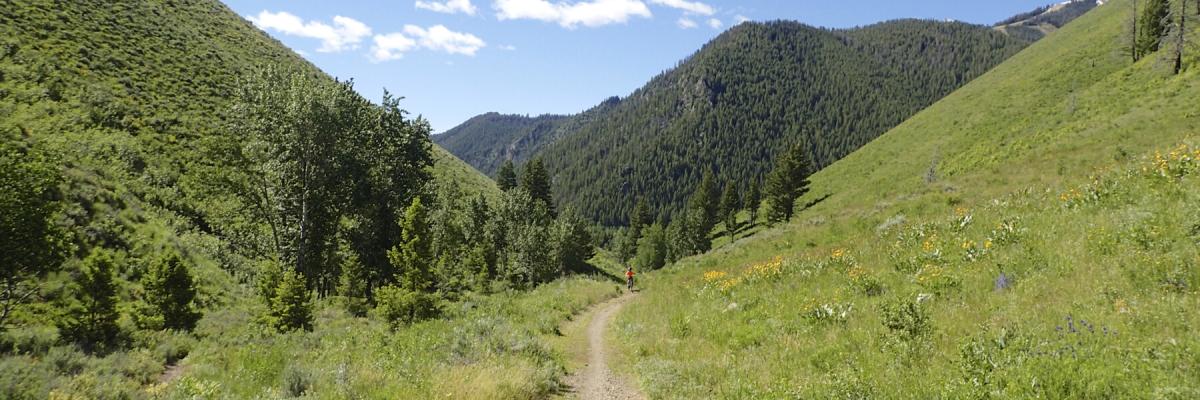A Guide to Conservation Easements in Idaho
Easements are legal agreements made between real property owners and other parties. Easements may allow outside parties to use the owner’s property for a given time, for given circumstances, so long as they adhere to any restrictions made by the property owner. These easements can be granted to third parties, neighboring property owners, or government agencies.
There are multiple types of easements depending on the property law of a given state. In this article, we will focus on one type: conservation easements.
What Is A Conservation Easement?
A conservation easement represents the landowner’s vision for the future. A conservation easement can help ensure that the natural beauty and inherent value of the owner’s property remain protected now and in the future. Typically, the landowner grants a conservation easement to a governmental body, a charitable conservation organization, or a land trust. This third party is legally entrusted to impose limitations or affirmative obligations on the land. This agreement can be granted in perpetuity, meaning that once the final terms of the agreement are set, they are held permanently.
While an easement’s specific purposes will vary based on the unique vision of the landowner, in general, an easement provides for the landowner’s vision for the property. This can include protection from subdivisions for residential or commercial development, or industrial uses like mining. These protections can remain in place long after the current owner is gone, ensuring their vision for conservation stays alive.
Idaho Conservation Easements
Under Idaho’s real property statutes, purposes for a conservation easement can include:
- Retaining or protecting natural, scenic, or open-space values of a property
- Assuring property’s availability for agricultural, forest, recreational, or open-space use.
- Protection of natural resources
- Maintaining or enhancing air quality
- Maintaining or enhancing water quality
- Preserving historical, architectural, archeological, or cultural aspects of the property
Once the goals of the conservation easement are determined and the easement is drafted, the easement is recorded in the county’s real property records. The land trust or other entity then monitors the property on an ongoing basis to help ensure that the purposes of the easement are being upheld according to the real property owner’s original vision.
The Benefits Of A Conservation Easement
As we have highlighted above, a conservation easement’s land stewardship benefits can be deep and long-lasting. After all, land trusts exist to acquire conservation easements and help protect our natural resources, so they can be an ideal match with real property owners concerned about our natural environment’s future. Conservation easements are a way to legally protect private land property for future generations.
There are additional advantages of conservation easements. Many of these advantages come in the form of tax benefits. Many conservation easements land in Idaho qualify for the Wildlife Habitat Exemption created by Idaho Code Section 63-605. This exemption is a property tax exemption extended to lands covered by the Agricultural Exemption for at least three prior years.
Donating a conservation easement-protected land to a land trust may also qualify an Idaho landowner for a tax-deductible charitable contribution. For a conservation easement gift to qualify, it must meet several federal tax code requirements and comply with “conservation purposes” established by the federal tax code.
In some cases, a landowner may also claim a tax deduction by making a bargain sale. More specifically, this bargain sale entails selling the conservation easement to the land trust, rather than donating it, and doing so at a price lower than the property’s fair market value. In such a case, the difference between the fair market value and the bargain sale price determines the charitable income tax deduction claim.
Usually, a landowner who sells a conservation easement in Idaho will owe some taxes on any income received due to the sale. However, in addition to the above workaround, some real property owners may benefit from a 1031 like-kind land exchange. This land exchange can allow landowners to delay their property taxes if they exchange the conservation land for other land.
Finally, one of the most impactful tax benefits made possible by a conservation easement is the reduction of estate tax liability. When a conservation easement removes the ability to subdivide, develop, and sell off the protected land, the property value generally goes down. This can result in reduced estate tax liability, which is particularly beneficial for families who wish to not only steward their land but also pass down that stewardship to the future generations of their family.
Do I Need The Help Of A Property Rights Lawyer?
The requirements of a conservation easement can be complex, both on the Idaho state and federal levels. Furthermore, maximizing the impact of land stewardship and potential tax benefits can be challenging. Therefore, real property owners interested in creating a conservation easement can benefit from the assistance of an experienced real estate lawyer.
An advanced skill set, including training in conservation law, real estate law, and tax code is just the beginning of what you will need to look for in ensuring competent negotiation of your conservation easement terms of agreement.
Allow us to put in the work on behalf of yourself, your vision, your land, and generations to come. Request a case evaluation with our real estate attorneys today.
Tags: